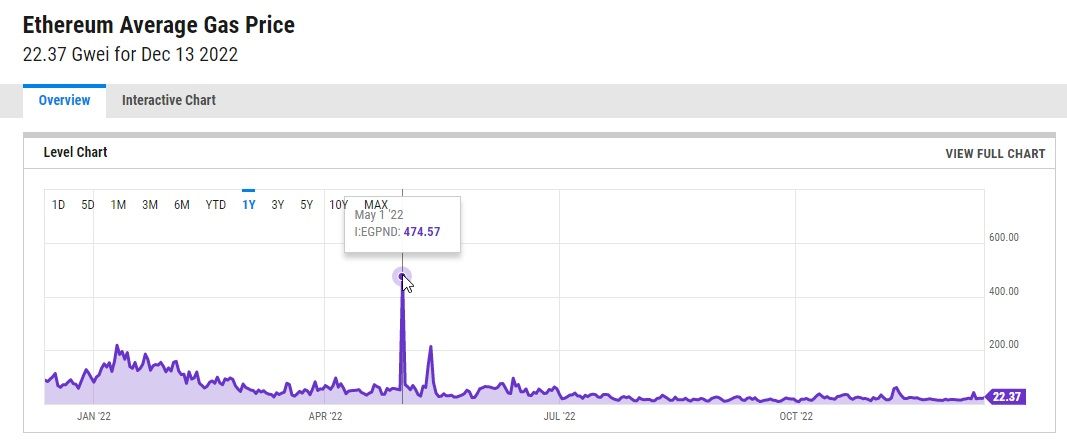Ethereum is the second-largest cryptocurrency by market capitalization and the busiest blockchain in terms of outright activity. It's also one of the most popular options for decentralized app (DApp) development and to launch new tokens, and is host to thousands of other cryptocurrency projects. It's no wonder the only cryptocurrency ahead of Ethereum is Bitcoin.So, what is Ethereum, and how does it work?
What Is Ethereum? What Is Ethereum 2.0?
Ethereum is a blockchain network that makes it possible to use decentralized applications and cryptocurrencies on the same blockchain. Ethereum is often described as one of the key components of Web 3.0.
Russian-Canadian programmer and writer Vitalik Buterin founded Ethereum in 2013. In the Ethereum whitepaper, Buterin described the need for Bitcoin to have a scripting language to develop applications. He went on to raise funds to work on developing Ethereum.
The team behind Ethereum uses several key concepts to create and maintain the Ethereum blockchain.
Ethereum Components
- P2P network: A P2P network comprises two or more connected computers that share resources. Ethereum runs on a set of network protocols that are known as devp2p.
- Ethereum Virtual Machine: The Ethereum Virtual Machine (EVM) processes Ethereum transactions by executing machine-language instructions known as bytecode. The Solidity programming language is used to create smart contracts that give instructions to the EVM.
- Client and node: An Ethereum client is any node used to verify the blockchain. Geth is a type of node that acts as a gateway into the Ethereum network. It provides access to the main, test, and private networks.
- Consensus algorithm: A consensus algorithm is a set of rules used to validate transactions on a blockchain and determine how nodes agree on the state of information stored on the blockchain. Ethereum switched from proof of work (PoW) to proof of stake (PoS) in 2022, drastically reducing its energy usage—but more on this in a moment.
You may be wondering how the different components of Ethereum work together to create the decentralized application ecosystem that we know today.
What Is Ethereum 2.0?
The Ethereum 2.0 Merge was the official moment Ethereum switched from its energy-guzzling proof of work model to the more environmentally friendly proof of stake consensus model.
Prior to the switch, Ethereum consumed more than 110TWh of energy per year—more than the entirety of the Netherlands. The only other blockchain to consume more power is Bitcoin. After the switch was completed in September 2022, the Ethereum network's energy usage dropped by 99.9%.
Ethereum 2.0 also introduced wider support for Ethereum staking, replacing the older system of miners. Those with enough capital can stake 32 ETH to become a validator on the Ethereum network, helping to run and secure the Ethereum 2.0 network by processing transactions.
While 32 ETH sounds astronomical (and it is), there are more than 480,000 validators at the time of writing. Furthermore, you can also join an Ethereum staking pool to pool your Ethereum with other users if you don't have a spare 32 ETH lying around.
But while the Ethereum 2.0 Merge was a great success for energy reduction, network efficiency, and the environment, some people have lost out: Ethereum miners. The Ethereum proof of work miners that once relied on Ethereum mining as a source of income can no longer do so. Still, given the issues Ethereum mining contributed towards in terms of GPU and other hardware scarcity, the switch to Ethereum 2.0 is a net gain for crypto and the world.
How Does Ethereum Work?
Some of the most important concepts used to make Ethereum are based on economics, cryptography, and smart contracts.
Ethereum depends on various systems, including a governance protocol and automation on the blockchain made possible by smart contracts. The immutable nature of smart contracts means that the input of data on the blockchain cannot be changed or easily tampered with.
Decentralized Applications on Ethereum
Decentralized applications are bridges between the real world and the blockchain. Many decentralized applications function similarly to regular apps, except that data flow and interactions are based on blockchain states. As new data is added to the blockchain, it becomes permanent.
Normal web applications are accessed through browsers. They return information to the web pages by retrieving information from servers. Unlike centralized web applications, decentralized applications ensure that no one can change the code or steal funds from the website.
The Ethereum blockchain is like a worldwide computer with data stored in bundles of distributed ledgers. The bundles of data hold information about the history of all transactions on the network. The use of smart contracts on Ethereum makes it possible to automate the creation and maintenance of tamper-proof transactions on web applications.
Smart Contracts
Smart contracts enable the storage and transfer of data in decentralized applications. A smart contract automatically executes the terms of an agreement once its criteria are fulfilled.
Smart contracts can automate traditional finance processes. In the earlier days of Ethereum, initial coin offerings (ICOs) were all the rage as people used smart contracts to raise funding for their ventures. Now, decentralized finance platforms have been made using higher standards for smart contract implementation.
Using Tokens on Ethereum
Different types of native tokens are used on the Ethereum network. Numerous Ethereum standards are used to develop the tokens, but ERC-20 is the most commonly used when it comes to fungible currency (i.e., that you want to spend). When it comes to other features of the Ethereum blockchain, like NFTs, different standards like ERC-721 and ERC-1155 are used instead. These are better optimized to deal with smart contracts involving NFTs.
Back to ERC-20. Thousands of projects use the ERC-20 standard to create their tokens (note, tokens and crypto coins are different). An ERC-20 token has six functions that make it easier to create than other types of tokens on the Ethereum blockchain.
The functions describe how tokens can be transferred and how to access the data related to tokens. The functions include balanceOf, totalSupply, transfer, transferFrom, approve, and allowance.
The totalSupply function helps calculate the total amount of tokens in circulation, while the balanceOf function stores the balance of an address. A smart contract requires these values to execute operations that depend on the amount of money in circulation or held by users on the Ethereum blockchain. The approve function may be equally important for withdrawing amounts from addresses.
A specified amount of tokens may be transferred from an address by using the transfer function. The transferFrom function is used to take the extra step of automating transfers from your address without your intervention. Transfers between addresses can be limited by an allowance function which shows how much can be spent by an address from another address.
ERC-721 token standards are used to create non-fungible tokens. Non-fungible tokens, like cryptocurrencies, can keep immutable records of transactions on the blockchain. However, there are differences in interchangeability. Each NFT token is unique and irreplaceable, unlike cryptocurrencies.
Verifying Transactions and Maintaining Data with Nodes and Validators
Validators maintain data accuracy on the network and keep it secure. A network of more than 480,000 validators operates according to the Ethereum blockchain's rules, confirming the network status, adding blocks of confirmed transactions to the blockchain, and maintaining the network's security.
Although validators must stake 32 ETH to become part of the network, they're not doing it entirely for the good of Ethereum. Having Ethereum staked means each validator stands a chance of receiving the block reward for validating a block (i.e., checking and confirming that the transactions in the block are true and correct). While Ethereum validators are chosen at random, the chance of being selected is proportional to the amount of Ethereum the validator stakes. In short, the more, the better.
Executing Transactions with Gas
Even after the Ethereum 2.0 Merge and the demise of costly Ethereum proof of work miners, the Ethereum network still uses gas to process transactions. An Ethereum gas fee is a small fee paid to incentivize validators to secure the network. Furthermore, Ethereum 2.0 didn't drastically alter gas fee costs on the network, although they are much lower and more stable than in early 2022.
Upgrading the Blockchain with Hard Forks
A hard fork is an update to a blockchain network that leads to the creation of a new version of the blockchain. Each version of the software has its unique codebase and features. Hard forks significantly impact the operational effectiveness of blockchains. The holders of tokens in the original blockchain usually receive tokens in the new fork.
One of the earliest examples of an Ethereum hard fork was caused by a decision to reverse the hack of an application on the Ethereum blockchain. Opposition arose as team members disagreed on the ethical grounds for a reversal of funds that were believed to go against blockchain technology's fundamental principles.
Upgrades to the Ethereum blockchain require stakeholders in the network to make changes to their software or hardware.
Ethereum Is an Evolving Ecosystem
Ethereum is an ecosystem of innovation for decentralized applications.
From ICOs to NFTs, new ways of digitizing goods and services have been created using both old and new technologies. However, if it is to meet expectations as a global, decentralized platform for money and new types of applications, many more updates will need to be made to improve the user experience of the open-source software.



